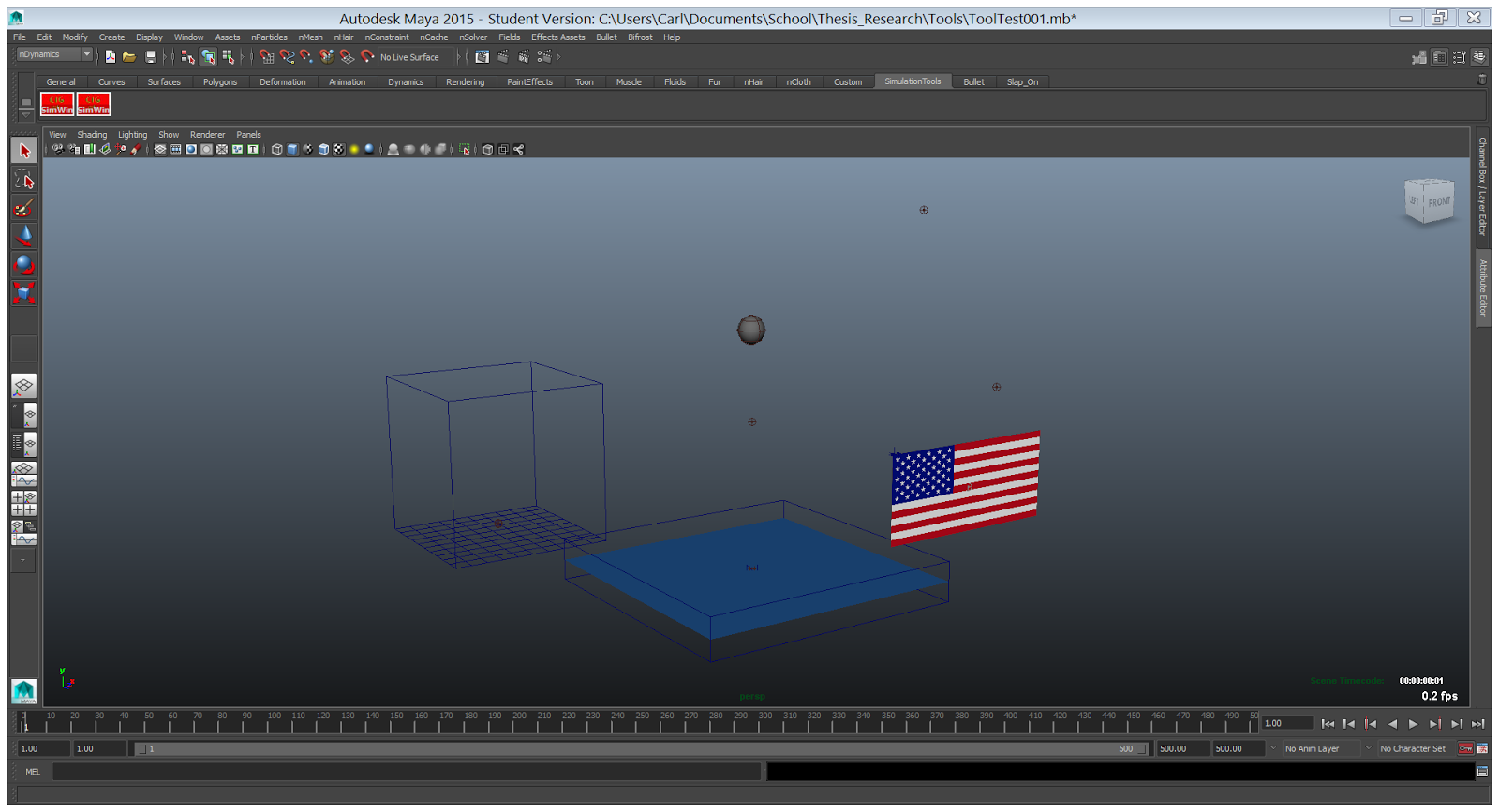 |
| The Current Version of the Simulation Editor |
Here
is the most recent version of the Simulation Editor. As you can see there are
several new features that I have added to help the animators handle the effects
pipeline and animate the scene. Although
there is still more work that needs to be done, I can safely say that this tool
will be completed very soon.
As
mentioned in my previous post about the Simulation Editor, the first set of
options is made to enable and disable the dynamic elements in the scene. This
allows the animators to focus on the animation and to make adjustments in their
scene if needed, without the frustration of playback lag, disabling each
dynamic element individually, and uncertainty of which dynamic elements were
enabled or disabled. The previous version I made was not able to work with
nHair and Soft Bodies, however I have fixed that problem so now the Simulation
Editor is able to enable/disable all simulations in Maya.
The
other options of my Simulation Editor are methods to initialize/clear
initialize the states of fluid containers (which also works on Maya’s Ponds and
Ocean simulations), and to ramp nParticles and/or nCloth of a scene. I have
added an input box, which allows the user to put in the starting frame (though
this might change so that this will update automatically). However now I have a
new bug which refuses to ramp the nCloth, and nParticles which I am currently trying
to fix.
The
other features I have added include allowing the animators to change objects
into active/passive rigid bodies, passive colliders, and to create a new
nucleus for dynamics elements that can have one. The reasons for this is to
make the tool have all essential functions, and to create a new nucleus so that
not all dynamic elements have the same nucleus, so that if you are ramping only
an nCloth, you don’t accidentally ramp anything else. It still needs a few
adjustments but once it’s completed it’ll prove to be very useful for the
effects in the scene.
The
final feature that I have added allows users to easily bake and cache their scenes
when they are ready to render it. I added this to make the tool more holistic
to the animation pipeline.
There
are still more bugs to squash, and codes to write but it should be done in
about two weeks.



